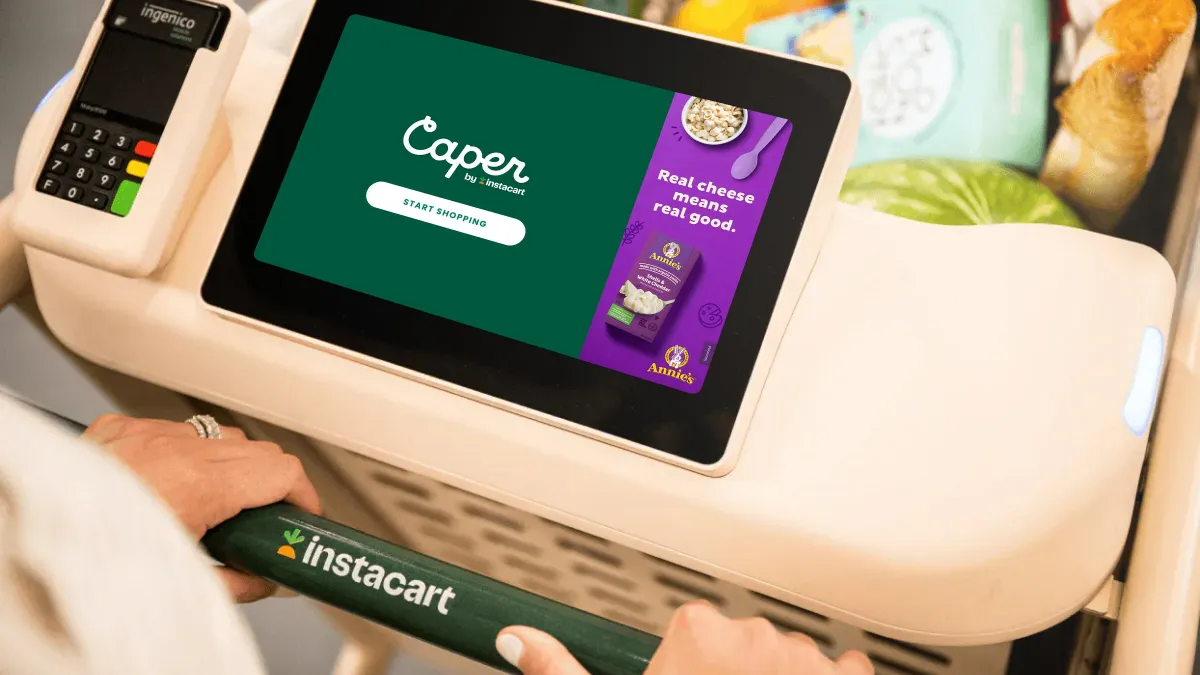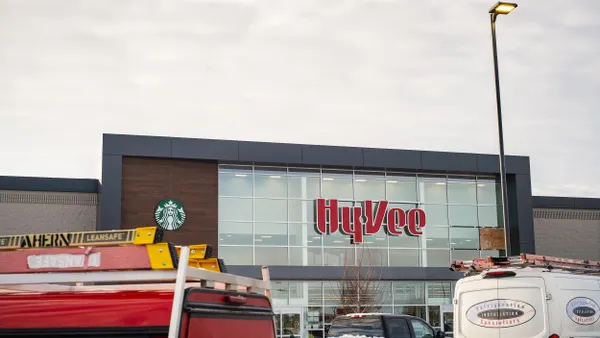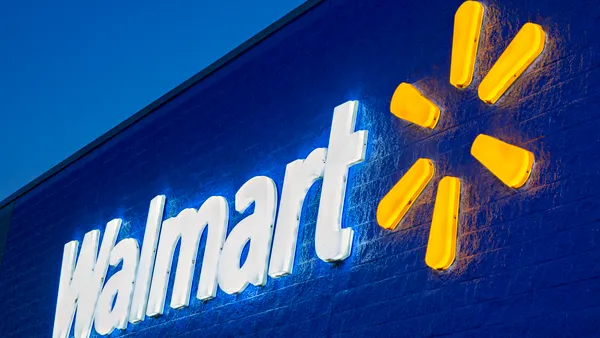Instacart built its reputation on being a third-party e-commerce provider. But now the company’s growth is based on diversifying the range of services it offers its retail clients as well as broadening its base of ad partners, Fidji Simo, the company’s CEO and chair, said Tuesday during the Goldman Sachs Communacopia & Technology Conference.
With its advertising base, Instacart initially relied on serving large brands but is now focusing on bringing on more small and emerging brands, Simo said.
“[W]hen some things happen in their business, even independent of Instacart, and [the large brands] might pull back advertising dollars, we are still too dependent on that,” Simo said. “Whereas if we had a more diversified business that would allow us to handle these kinds of changes much better.”
Simo said Instacart’s focus on emerging brand advertisers led to its newly announced retail media partnership with e-grocer Thrive Market: “They have a ton of emerging brands on Thrive Market, and we can be the best partner to actually get these brands to become advertisers.”
Instacart is also expanding ad placements beyond just its app to websites for retailers including Costco, Publix and Sprouts Farmers Market, Simo said. Currently, Instacart can serve ads on 100 retailers’ websites — a fraction of its partner base of 1,500 national, regional and local retail banners.
As Instacart looks to attract smaller advertisers, the company is focusing on helping emerging brands target new-to-brand customers, Simo said.
Along with diversifying its ad clients, Instacart is also looking to improve its retail media measurement capabilities as it works toward the goal of having advertising account for 4% to 5% of its gross transaction volume (GTV). During its second quarter, advertising and other revenue accounted for 2.8% of GTV.
Additionally, Instacart is aiming to diversify how many services its retail partners tap. While Instacart has seen a rise in nonexclusive partnerships, Simo said depth of integration rather than exclusivity influences how successful a retailer partnership is.
About half of Instacart’s top 50 partners have launched a new “big” service or integration, such as SNAP online payments, virtual convenience stores, pickup or enterprise business solutions, in the last year, Simo said.
“If you are one of these grocers that has launched at least one new service with us in the last year, you are growing twice as fast as the grocers that haven't launched an incremental integration,” she said.
For consumers, Instacart is expanding its value proposition beyond convenience to affordability and serving as a one-stop online shopping destination, Simo said. For example, the company’s restaurant delivery tie-up with Uber Eats is complementary to its customer base while its scheduled delivery option lets customers save money by ordering further ahead, Simo said.
“We have a really great market where we have customers that value convenience over price,” Simo said. “We want to continue also developing products that attract people that value price over convenience.”












